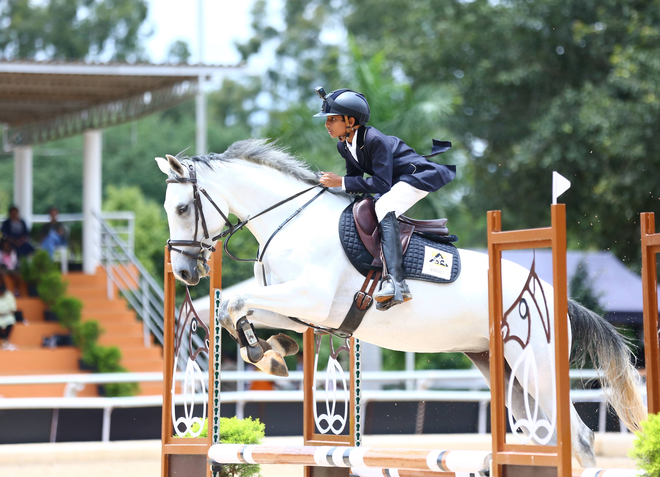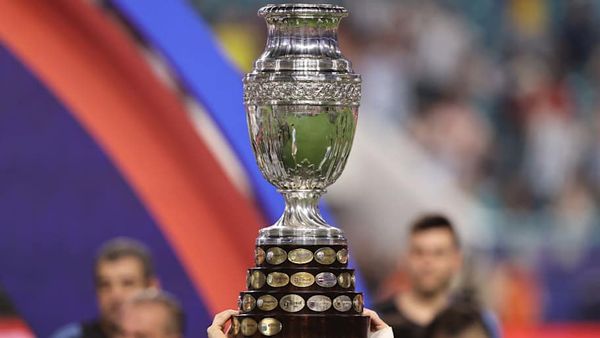Fourteen-year-old Jaiveer Varma moved from Hyderabad to Bengaluru three years back to join the Embassy International Riding School in Devanahalli where he is training to be an equestrian now. “My goal is the 2026 Youth Olympics and 2030 Asian Games,” says the young athlete whose words exude confidence and clarity.
Varma is one among the 25-odd athletes being trained at the school run by veteran equestrian Silva Storai. He is also ready to take part in the 13th edition of the Equestrian Premier League (EPL) held by the school beginning on June 23. With his three horses, he will be competing in the 1 m, 1.05 m, 1.10 m, and 1.20 m categories. The competition will be held for three days every month until November.

EPL which had its humble beginnings in 2010 with just two clubs participating then has by now grown in size. This year the competition will see participation from 25 clubs from various parts of India including Bengaluru, Puducherry, Kanyakumari, Chennai, Hyderabad and Mumbai.
Silva Storai, the 64-year-old Italian-born Indian who became the first female jockey in India in 1992, runs the riding school. She seems to be on cloud nine as she talks about how the sport and the tournament have been gaining popularity.
The beginning
It all started in 1996 when Ms Storai met Jitu Virwani, chairman of the Embassy Group, who was planning to start a riding school. managed to bring in highly qualified instructors from the British Royal Society who helped her set up a base for the equestrian sport in the city.
“It’s not just sitting on a horse and going around like a cowboy, which is what kids love the most,” Ms Storai laughs. “We all love to jump on a horse and have a good time. But that’s hobby, and then there’s the sport,” she says.
While training, she combines both so that if the students decide to take up riding as a profession later in life, they have a foundation for it.
While cricket continues to be India’s favourite sport, according to Ms Storai, the equestrian sport has seen incredible growth in the country in the last 10-15 years. In 2018 Arjuna Award winner Fouaad Mirza from Bengaluru won two silver medals at the Equestrian Jumping Final at the Asian Games in Jakarta. In 2021 he also became the third Indian to qualify for equestrian at the Olympics after Indrajit Lamba in 1996 and Imtiaz Anees in 2000.
“It has stimulated a lot of people’s imagination and has shown them that it is possible to do it. It is everybody’s game, it is a sport where a man and woman can compete equally,” says Ms. Storai emphasizing the importance of events like EPL which would give young athletes more exposure to the sport.
“When we started EPL, it was all very casual. There was no proper dress code, just two clubs were participating. So, the first goal was to raise the standard,” Ms. Storai remembers.
As years passed more clubs started coming in, and today, she notes, Bengaluru is one of the places with the highest number of riding clubs.
From fun ride to professional jockey
Interestingly, back in Italy, Ms Storai or her family had nothing to do with horses. Her connection with the beast started in Kodaikanal where she lived with her husband for 15 years. Households with horses are common in the sleepy hill station in Tamil Nadu where they are used for transportation in the hilly terrain. Ms. Storai had two horses on which she would go riding in the woods.
“It was all fun then. But it became more serious when I came to Chennai. There I became a jockey and later I moved to Bengaluru. Things took a very professional turn after that,” she remembers.
As the only female jockey in India, it was not a walk in the park for Ms. Storai. But from those days, she feels, things have changed drastically. While equestrian continues to be an expensive sport with a high entry barrier for a large part of the Indian population, Storai notes that parents, especially those in the upper middle class, are today willing to go out of their way for their children and spend money to train them.
“I see parents relocating cities and coming to Bengaluru for their kids’ training purposes,” she says citing the example of Varma. While Varma himself moved to the city in 2019 and has been training at Embassy by staying at their residential facility, his parents moved to Bengaluru two months back.
Challenges galore
The success of equestrians like Fouaad Mirza and Ashish Limaye who were also associated with the school has further encouraged people and shown them doors to new possibilities.
However, challenges are still aplenty for the sport in India. Many athletes move abroad for improved training facilities, better opportunities and exposure. The Equestrian Federation of India itself has been fraught with allegations of mismanagement in the selection of athletes for international competitions.
Another challenge has been the lack of availability of the right kind of horses in the country. Unlike race horses that are bred for speed, the equestrian sport requires warm-blooded horses bred for impulsion as they have to perform very complicated movements in dressage.
Often one has to travel abroad to find the right horse and then bring them back, which makes it a tedious process. To address this challenge, the Embassy School started a breeding programme in 2015. According to Ms Storai, a few more clubs have now started similar programmes and she believes in about 20 years India would have good sports horses.
Upcoming talent
When it comes to people, there’s no dearth of talent in a country of 140 crore people, she notes. However, while Ms. Storai vouches for great potential among the young athletes she trains, she is also realistic.
“The potential is there. But like everything in life, you got to see where it goes. It’s a long journey. The youngsters need to remain steady and motivated, and they also need their parents to be on their side... The future is looking very bright.”







